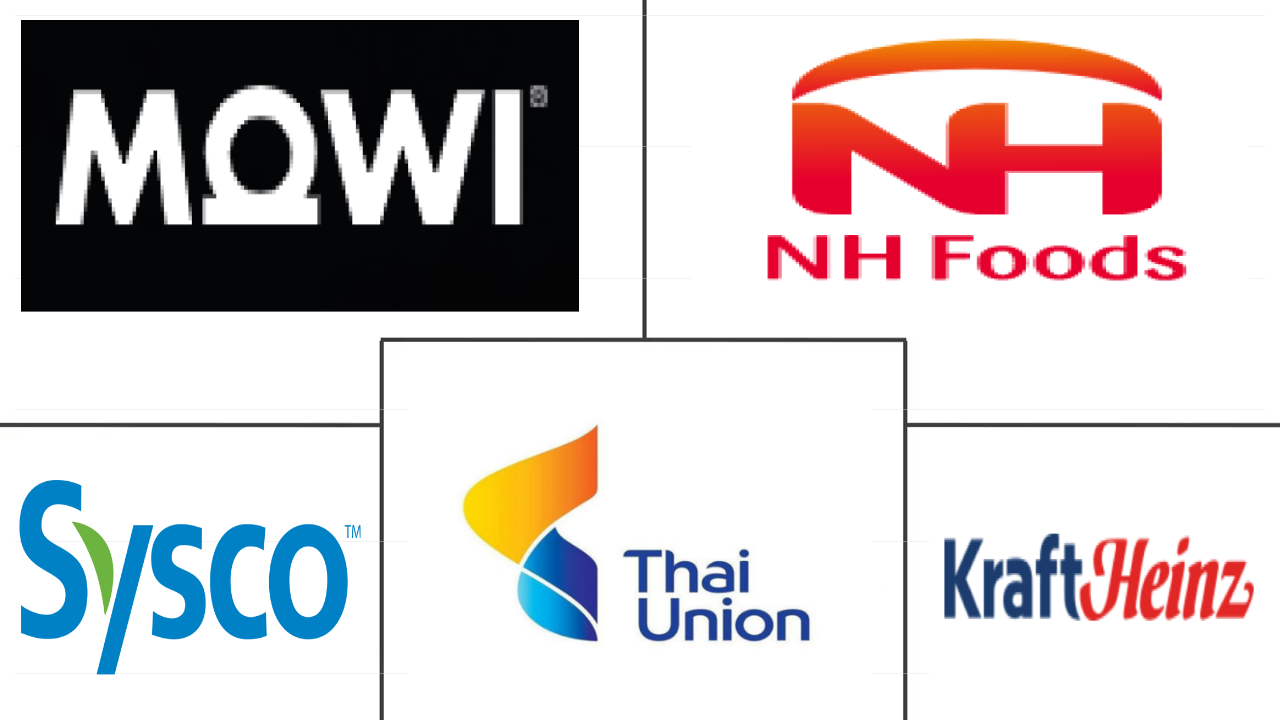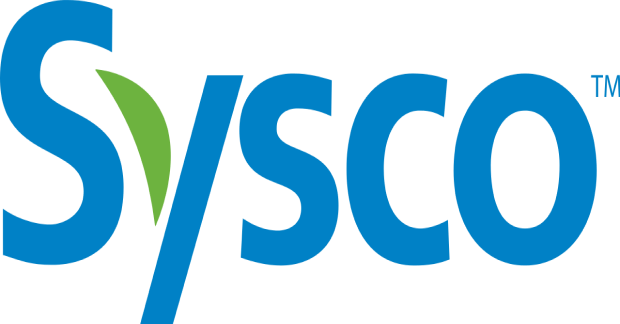Market Size of north america seafood Industry
| Icons | Lable | Value |
|---|---|---|
|
|
Study Period | 2017 - 2029 |
|
|
Market Size (2024) | USD 35.22 Billion |
|
|
Market Size (2029) | USD 37.59 Billion |
|
|
Largest Share by Type | Fish |
|
|
CAGR (2024 - 2029) | 1.31 % |
|
|
Largest Share by Country | United States |
|
|
Market Concentration | Low |
Major Players |
||

|
||
|
*Disclaimer: Major Players sorted in no particular order |
North America Seafood Market Analysis
The North America Seafood Market size is estimated at 35.22 billion USD in 2024, and is expected to reach 37.59 billion USD by 2029, growing at a CAGR of 1.31% during the forecast period (2024-2029).
35.22 Billion
Market Size in 2024 (USD)
37.59 Billion
Market Size in 2029 (USD)
4.43 %
CAGR (2017-2023)
1.31 %
CAGR (2024-2029)
Largest Segment by Type
62.30 %
value share, Fish, 2023
Fish remains the major seafood type consumed in the region owing to its wide availability and comparatively cheaper prices.
Largest Segment by Country
69.18 %
value share, United States, 2023
The larger on-trade industry, high seafood production, presence of distinct ethnic groups, and higher purchasing power are a few of the major factors driving the US market.
Fastest-growing Segment by Type
1.33 %
Projected CAGR, Shrimp, 2024-2029
The rising popularity of health benefits of fish is the major factor impacting the growth of the segment in the forecast period.
Fastest-growing Segment by Country
1.67 %
Projected CAGR, Canada, 2024-2029
The seafood segment, including crabs and lobsters, is primarily driving the Canadian market. The growing online seafood distribution may further drive the market.
Leading Market Player
7.17 %
market share, Sysco Corporation, 2022

Sysco Corporation offers a wide selection of seafood species to the retail and food service sectors. These products are available in fresh, frozen, and prepared forms.
Improving freezing technologies are boosting sales in the region
- The overall North American seafood market is expected to register a CAGR value of 0.77% during the forecast period. People spent over USD 180-200 on seafood in the United States as of 2021. The US President signed an executive order to promote American seafood in May 2020 to boost competitiveness in the seafood industry. It also urges the expansion of sustainably produced seafood in the United States. For competitive expansion, major corporations, including Marine Harvest, Starkist, and Nippon Suisan, are concentrating on the market's numerous product innovations.
- In North America, shrimp is the fastest-growing segment in the seafood market, with a projected CAGR value of 1.33% during the forecast period. The shrimp sector is gaining traction as shrimp are being widely used in dietary supplements to overcome the lack of protein intake among consumers. The major shrimp-producing brands are SeaPak, Wild Gulf Shrimp, and Sam's Choice.
- In the United States, regulators implemented season-length restrictions, total allowable catch limits, and gear and vessel power restrictions to combat overfishing. As a result, fishermen adopted new technologies and methods to work around these controls, and the prices of fish increased. The United States witnessed a price of 2.4 per kg in 2022 from 19.3 per kg in 2017. Improving infrastructure, freezing storage facilities, and ensuring the availability of high-quality fish commodities for domestic consumers are critical components of an efficient and profitable supply chain. Thus, there will also be growth in the importance of organizations that support sustainable fishing, such as the Global Seafood Alliance, the Global Sustainable Seafood Initiative, and the Sustainable Fisheries Partnership.
Sustainability is highly implemented and promoted, significantly driving the market
- The seafood market in the region observed a steady growth during the study period. The market grew by 27.37% in value from 2017 to 2022. The consumption is increasing in the region due to the growing interest in the health benefits of seafood consumption, which is boosted by various awareness campaigns such as 'Eat Seafood America.' Similarly, NOAA (NATIONAL OCEANIC AND ATMOSPHERIC ADMINISTRATION) offers the public with simple, scientifically based information to aid in making informed, sustainable seafood decisions. FishWatch, an online platform by NOAA, provides constantly updated information on how seafood in the United States is gathered in accordance with laws that maintain a healthy environment and ensure growing fish populations.
- The United States accounted for the major share of the North American seafood market and recorded a Y-o-Y growth rate of 2.16% by value from 2021 to 2022. The on-trade sales of seafood in the country are growing with the growing foodservice industry and the increasing number of seafood dishes on the menu. Sushi, shrimp tempura, and crab rangoon are among the 15 dishes that diners most want to order when eating away from home in the United States.
- Canada is projected to record the highest CAGR value of 1.68% during the forecast period (2023-2029), primarily driven by processed shrimp. The market has seen a growth in demand for label-friendly products like sustainable seafood and locally produced seafood. Manufacturers and regulatory agencies are taking steps to guarantee that when customers shop for seafood at the market, they may be confident that it has been sustainably fished or farmed if the species is harvested in the region.
North America Seafood Industry Segmentation
Fish, Shrimp are covered as segments by Type. Canned, Fresh / Chilled, Frozen, Processed are covered as segments by Form. Off-Trade, On-Trade are covered as segments by Distribution Channel. Canada, Mexico, United States are covered as segments by Country.
- The overall North American seafood market is expected to register a CAGR value of 0.77% during the forecast period. People spent over USD 180-200 on seafood in the United States as of 2021. The US President signed an executive order to promote American seafood in May 2020 to boost competitiveness in the seafood industry. It also urges the expansion of sustainably produced seafood in the United States. For competitive expansion, major corporations, including Marine Harvest, Starkist, and Nippon Suisan, are concentrating on the market's numerous product innovations.
- In North America, shrimp is the fastest-growing segment in the seafood market, with a projected CAGR value of 1.33% during the forecast period. The shrimp sector is gaining traction as shrimp are being widely used in dietary supplements to overcome the lack of protein intake among consumers. The major shrimp-producing brands are SeaPak, Wild Gulf Shrimp, and Sam's Choice.
- In the United States, regulators implemented season-length restrictions, total allowable catch limits, and gear and vessel power restrictions to combat overfishing. As a result, fishermen adopted new technologies and methods to work around these controls, and the prices of fish increased. The United States witnessed a price of 2.4 per kg in 2022 from 19.3 per kg in 2017. Improving infrastructure, freezing storage facilities, and ensuring the availability of high-quality fish commodities for domestic consumers are critical components of an efficient and profitable supply chain. Thus, there will also be growth in the importance of organizations that support sustainable fishing, such as the Global Seafood Alliance, the Global Sustainable Seafood Initiative, and the Sustainable Fisheries Partnership.
| Type | |
| Fish | |
| Shrimp | |
| Other Seafood |
| Form | |
| Canned | |
| Fresh / Chilled | |
| Frozen | |
| Processed |
| Distribution Channel | ||||||
| ||||||
| On-Trade |
| Country | |
| Canada | |
| Mexico | |
| United States | |
| Rest of North America |
North America Seafood Market Size Summary
The North America seafood market is experiencing a steady expansion, driven by increasing consumer interest in the health benefits of seafood and the promotion of sustainable fishing practices. The market is characterized by a diverse range of products, with shrimp emerging as the fastest-growing segment due to its incorporation into dietary supplements. The United States holds a significant share of the market, supported by a robust foodservice industry and a growing menu of seafood dishes. Regulatory measures in the U.S. aim to combat overfishing, prompting advancements in fishing technologies and methods. The market's growth is further bolstered by organizations advocating for sustainable seafood practices, such as the Global Seafood Alliance and the Sustainable Fisheries Partnership.
Canada and Mexico also contribute to the market's growth, with Canada focusing on processed shrimp and sustainable seafood products. The Canadian seafood industry is predominantly represented by finfish, with salmon being the most produced species. Mexico's extensive coastline and rich marine resources offer substantial potential for fisheries, particularly in tuna production. Despite challenges such as overfishing and supply shortages, the region's seafood market continues to thrive, with increasing fish prices reflecting strong demand and recovery from previous economic downturns. The market remains fragmented, with major players like Mowi ASA and Sysco Corporation leading the industry.
North America Seafood Market Size - Table of Contents
-
1. MARKET SEGMENTATION (includes market size in Value in USD, Forecasts up to 2029 and analysis of growth prospects)
-
1.1 Type
-
1.1.1 Fish
-
1.1.2 Shrimp
-
1.1.3 Other Seafood
-
-
1.2 Form
-
1.2.1 Canned
-
1.2.2 Fresh / Chilled
-
1.2.3 Frozen
-
1.2.4 Processed
-
-
1.3 Distribution Channel
-
1.3.1 Off-Trade
-
1.3.1.1 Convenience Stores
-
1.3.1.2 Online Channel
-
1.3.1.3 Supermarkets and Hypermarkets
-
1.3.1.4 Others
-
-
1.3.2 On-Trade
-
-
1.4 Country
-
1.4.1 Canada
-
1.4.2 Mexico
-
1.4.3 United States
-
1.4.4 Rest of North America
-
-
North America Seafood Market Size FAQs
How big is the North America Seafood Market?
The North America Seafood Market size is expected to reach USD 35.22 billion in 2024 and grow at a CAGR of 1.31% to reach USD 37.59 billion by 2029.
What is the current North America Seafood Market size?
In 2024, the North America Seafood Market size is expected to reach USD 35.22 billion.

